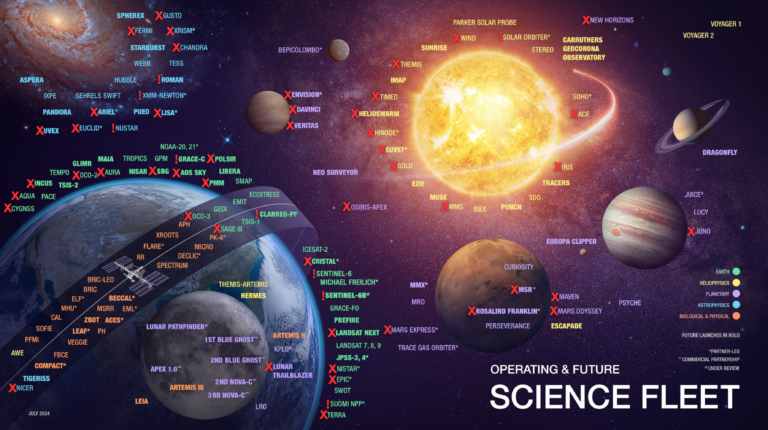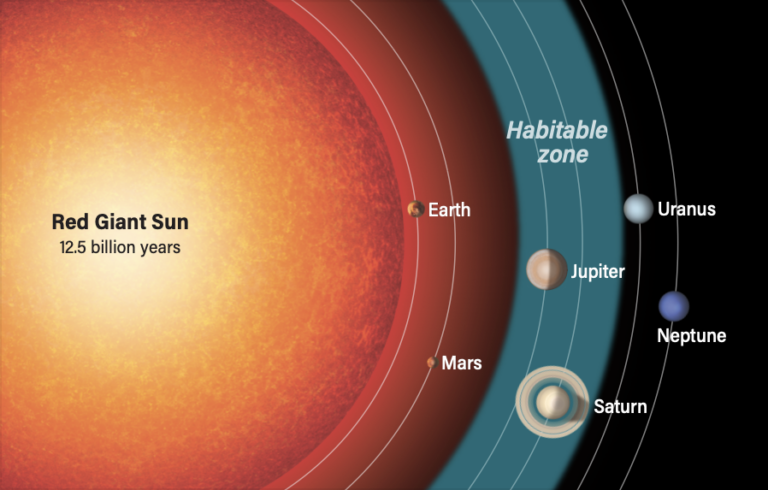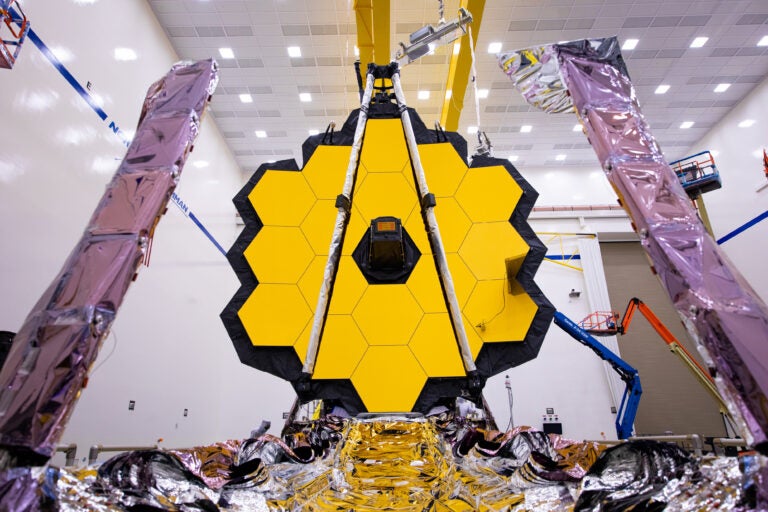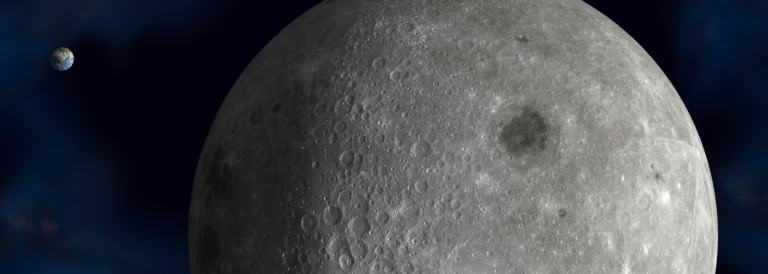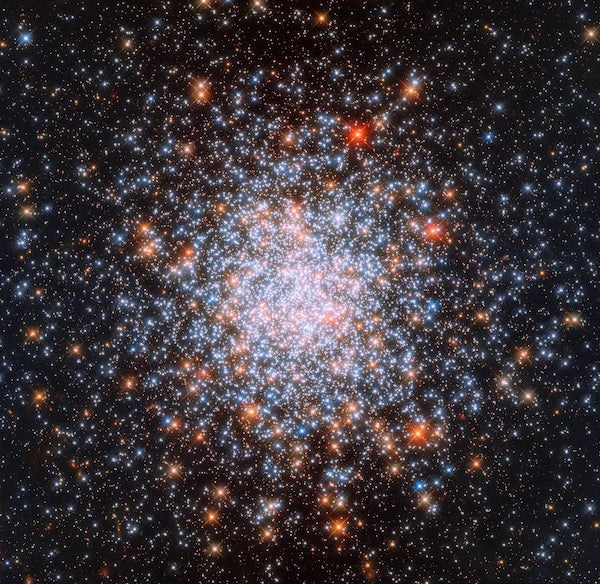
Since they lack dark matter and central black holes, how did globular clusters form?
Sasi K. Chandran
Wake Forest, North Carolina
Globular clusters are the fossils of the astronomical world. We know they are very old, having formed shortly after the Big Bang. Furthermore, they must be pretty robust, since many have survived until the present day. But the exact details of how these clusters formed is still the subject of much research.
Observations of nearby globulars indicate that they do not contain dark matter, but that does not preclude them having formed originally within mini dark-matter halos.
However, we see young (i.e., a few billion years old) star clusters within the Magellanic Clouds with many of the characteristics of globular clusters. In other words, if we could observe those star clusters approximately 10 billion years from now, we would probably call them globular clusters. These proto-globulars in the Magellanic Clouds are not surrounded by mini dark-matter halos, so it’s likely that the old globular clusters we see now were also free of dark matter earlier in their lifetime.
The subject of whether globulars contain a central massive black hole is controversial. For every claim, there seems to be a counterclaim. Certainly, globulars contain stellar-mass black holes (left over from the deaths of massive stars or mergers of stellar remnants), but whether these can accumulate at the center of such a cluster to form a massive black hole thousands of times the mass of our Sun remains unclear.
All large galaxies host a system of globulars. Our Milky Way contains around 200 such clusters; some are found in the bulge and disk, but most are in our galaxy’s halo. Interestingly, only a fraction of the Milky Way’s globular clusters formed originally in our galaxy — most have been added over time as the Milky Way swallowed the dwarf galaxies in which they originally formed. (It’s estimated that around half a dozen dwarf galaxies have merged with and been disrupted by the Milky Way as it grew.)
While you might expect that globular clusters would be scattered by these mergers, their robustness means that they are still with us today, while the original host galaxy’s stars are dispersed. So, next time you look at a globular cluster with a telescope, consider that it might be an alien object formed outside the Milky Way. It may even have been the former nucleus of a dwarf galaxy!
Duncan Forbes
Professor, Centre for Astrophysics & Supercomputing, Swinburne University, Melbourne, Australia

